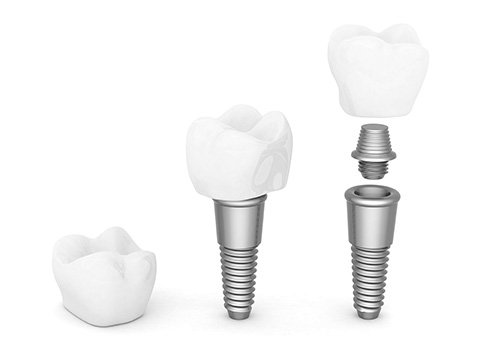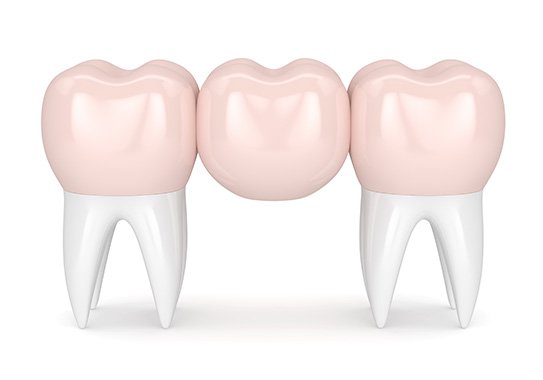Fixed Teeth Replacement
Dental Implants
In some situations, where it is impossible to save a tooth, implants are a viable treatment option.YOU ARE A GOOD CANDIDATE FOR DENTAL IMPLANTS IF YOU:
- Are in good health
- Have healthy gums
- Have enough bone to anchor the implants in the jaw
- Are committed to taking care of the implanted teeth with regular brushing and flossing.Dental implants are metal posts that are surgically positioned into the jawbone beneath your gums to provide stable support for artificial teeth. Some people who have lost bone in their jaw can still get implants, but first the bone must be augmented with a bone graft. Dentures and bridges mounted to dental implants won’t slip or shift in your mouth, which will make you feel more comfortable and confident about eating and speaking. After receiving implants, regular follow-up visits are important.
WHAT TO EXPECT
After administering local anesthesia, the implant will be carefully inserted into the bone. The gums will be sewn above the implant site and you will be left to heal for about two the three months depending on the site of the implant. At the three month mark, a test will be done on the implant to ensure what’s called osseointegration or a fusing of the implant to the bone. At this stage, a small contoured healing cap will be attached to the implant to connect the implant to surface of the gums and help shape the gums and receive the final crown.Our doctors will unscrew the healing cap and screw in an impression coping, which is specifically made for your implant. An x-ray and putty impression will be taken to ensure proper fit. Photos will be taken of the teeth for the dental ceramist to create a life-like implant crown that no one will detect. The healing cap will be replaced and your next visit will be in two weeks for the final insertion of your crown.The final visit will be just as easy as the previous one. The healing cap will be removed, a disinfecting solution will be applied to the implant to rid any bacteria, and the permanent custom abutment will be tried along with the implant crown. Dental x-rays will be taken to ensure a quality fit and that no micro-gaps are noted between the interface of the abutment and implant.Implant crowns can be made in two ways; there are those that are screw retained, and those that are cement retained. We will choose the best fit for your case.Bridge
‘Bridging’ is a dental procedure that replaces a missing tooth with porcelain fused with metal or full porcelain teeth to give a natural appearance. This porcelain tooth gains support from the adjacent teeth or from dental implants.This procedure can be used to replace one or more missing teeth. It usually requires 2 appointments set one week apart (more for complex cases).Crowns
Crowns act as a helmet to protect badly worn down or decayed teeth from breaking down further. They restore the shape, strength and improve the appearance of teeth.2 short appointments are required, about 1 week apart.




